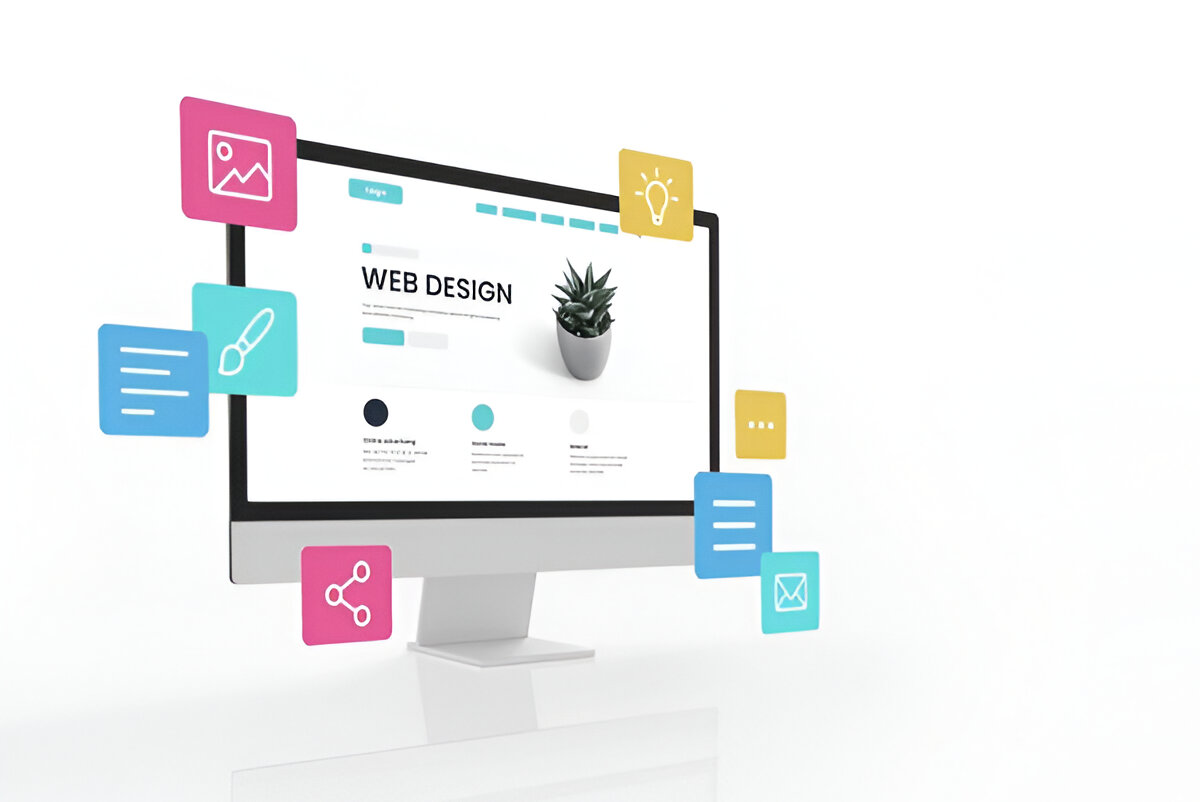In today’s digital landscape, a well-designed website is crucial for attracting and retaining visitors. Unfortunately, many businesses fall prey to common web design mistakes that can hinder their online presence and adversely impact user experience. Understanding these pitfalls and learning how to avoid them can make a significant difference in your website’s success. This blog outlines five web design mistakes to avoid, along with expert tips to enhance your site’s usability and appeal.
1. Cluttered Design
One of the most prevalent web design mistakes to avoid is a cluttered layout. When a website is overloaded with information, images, and various elements, it can overwhelm visitors, leading to confusion and frustration. A cluttered design detracts from user focus and ultimately drives users away from your site.
How to Avoid It:
To create a clean and engaging design, prioritize white space. White space, or negative space, helps break up content and makes it easier for users to read and navigate your website. Utilize a grid layout to organize elements systematically, and ensure a consistent design theme throughout your site. Limit the number of colors and fonts, keeping your design simple and elegant.
2. Poor Navigation
Effective navigation is essential for improving user experience. Many sites suffer from poorly structured menus or confusing navigation paths, making it difficult for visitors to find what they’re looking for. Complicated navigation can lead to increased bounce rates, as users abandon their search for a more user-friendly site.
How to Avoid It:
Conduct a thorough evaluation of your website’s navigation. Organize content into logical categories and use clear, descriptive labels for menu items. Implement a hierarchical structure that allows users to drill down into specific sections quickly. Additionally, consider including a search bar for users who prefer to look for specific content directly. Regularly testing your navigation with real users can help identify potential issues and improve user flow optimization.
3. Ignoring Mobile Responsiveness
With more users accessing websites via mobile devices than ever before, ignoring mobile responsiveness is a critical web design error. A non-responsive site can lead to poor user experiences, including distorted images, unreadable text, and broken navigation menus, ultimately driving mobile users away.
How to Avoid It:
Implement responsive design principles to ensure your site adapts seamlessly to varying screen sizes. Use flexible grids and fluid images, and avoid fixed-width layouts. Testing your website on multiple devices—smartphones, tablets, and desktops—can help identify potential issues. Prioritize mobile usability during the design process to ensure your website looks and functions well on every device.
4. Overloading with Text
While content is a vital aspect of your website, overwhelming visitors with excessive text can lead to disengagement. Long paragraphs, jargon-heavy language, and lack of structure can cause important information to go unnoticed.
How to Avoid It:
To improve user experience, aim for concise and clear messaging. Break up lengthy text with headings, bullet points, and visuals. Incorporate images, infographics, or videos to complement your written content and make it more engaging. Additionally, consider a “tl;dr” (too long; didn’t read) section at the top of each page, offering a brief overview for users who skim content.
5. Lack of Clear Calls to Action (CTAs)
A well-defined call to action (CTA) guides users toward the next steps, whether it’s signing up for a newsletter, making a purchase, or downloading a resource. Failing to include clear and compelling CTAs can result in missed opportunities for conversions and user engagement.
How to Avoid It:
Design your CTAs to stand out visually, using contrasting colors and strategic placement. Be clear and concise in your language, utilizing action-oriented phrases that motivate users to take the desired action. A/B testing different CTAs can help identify which phrases, colors, and placements resonate best with your audience, ultimately improving conversion rates.
Conclusion
Avoiding common web design mistakes is crucial for improving user experience and ensuring that your website serves its intended purpose effectively. By addressing cluttered designs, optimizing navigation, ensuring mobile responsiveness, streamlining text, and implementing clear calls to action, you can create a visually appealing site that resonates with your audience.
Remember, a well-designed website is not only aesthetically pleasing, but it also prioritizes functionality and user satisfaction. Regularly reviewing your site’s performance and soliciting user feedback can help you identify areas for improvement. With these strategies in mind, you can enhance your website’s user experience and pave the way for greater engagement and conversions. Embrace the power of effective web design, and watch your online presence flourish.




